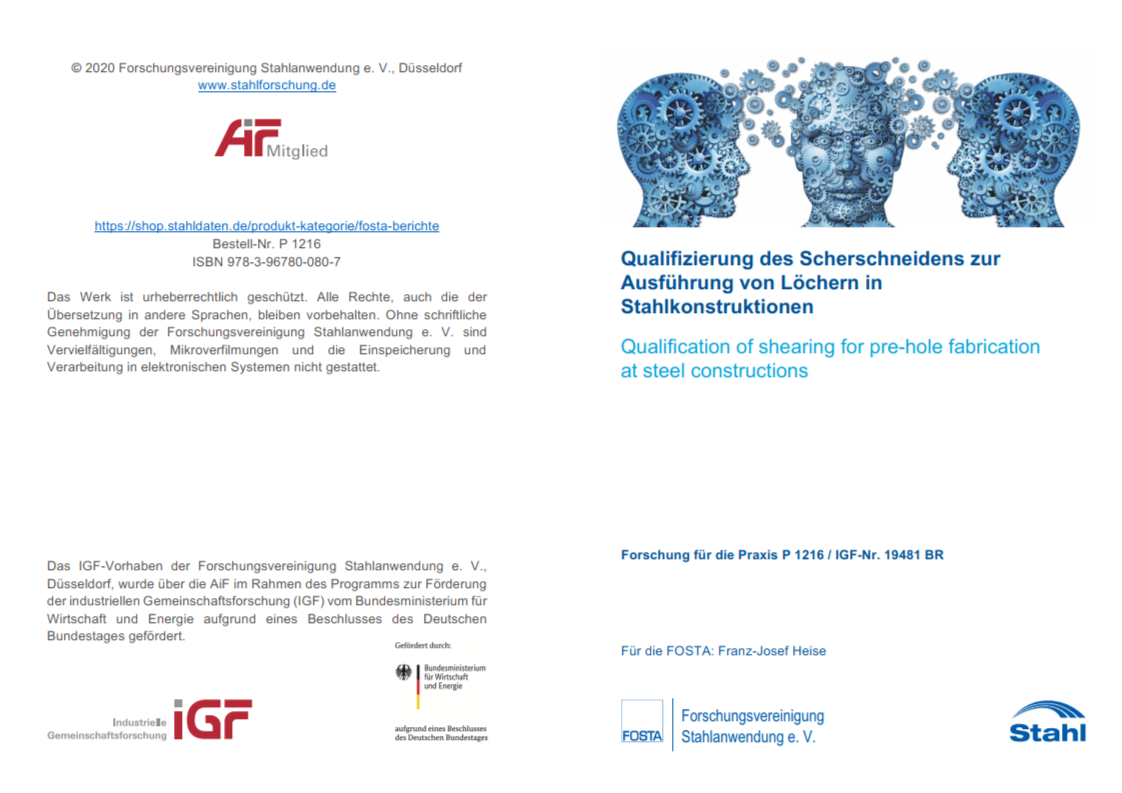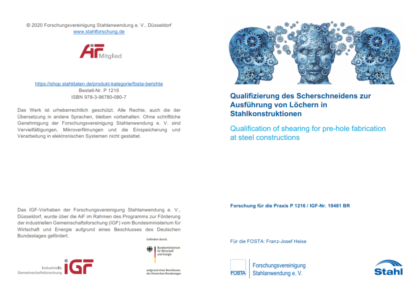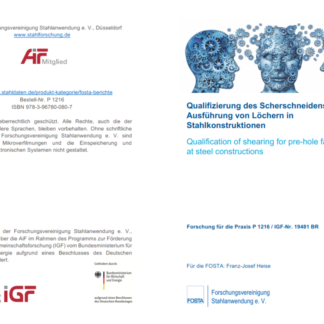Description
P 1216 – Qualification of shearing for pre-hole fabrication at steel constructions
Pre-hole production by shear cutting makes a significant contribution to increasing productivity. In steel construction, according to DIN EN 1090-2, pre-punching by shear cutting is only permissible if t < 1.4 ꞏ d. Shear cutting of the nominal hole diameter is generally not permitted in connections subject to cyclic or seismic loads, lap joints with bolts above strength class 8.8 or in slip-resistant connections. In DIN EN 1090-2, the shear cutting of the hole condition and the production-related boundary conditions of the hole are only dealt with to a limited extent. When using shear cutting as a costeffective pre-punching method, the manufacturing parameters such as cutting gap or punch and die geometry have a decisive influence on the quality of the cut surface and thus also on the material and load-bearing behaviour in the area of the hole or the related residual cross-section of the component. By adapting the cutting parameters and the system technology, it is possible to achieve up to 100 % smooth cut with no burrs. Holes made in this way in the steel material S235JR achieve a better vibration resistance behaviour than the drilled hole at the component thicknesses t = 6 mm (DSt = 13 mm) and t = 10 mm (DSt = 9 mm and DSt = 13 mm). A comparison of the “punched hole bars” with the “drilled hole bars” does not show any vibration resistance reducing influence of the shear cutting.
In addition to the steel material S235JR, other steel materials such as S355J2+N, S460MC, S250GD, S350GD and HX420LAD were used in several component thicknesses. Here, too, it can be seen that through a defined specification of cutting parameters (reduction of the cutting gap), the result of the vibration strength test could be significantly improved compared to the “state of the art” shear cutting.
Published in:
2020
Authors:
Prof. Füssel, Prof. Wanner




